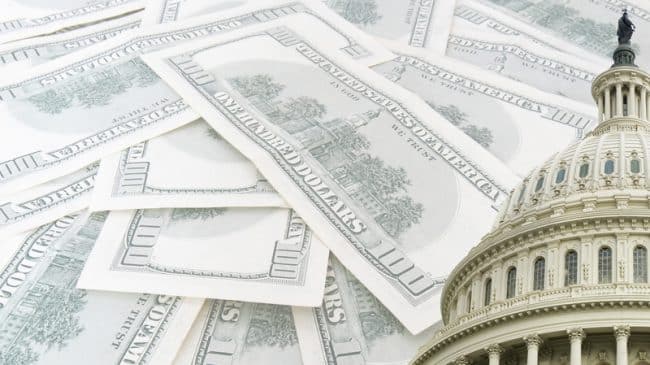Previous: 10. Transportation > Taxpayer’s Guide > Next: 12. Education
Summary: Over $13.6 billion is given to the Department of Housing and Urban Development for programs to help struggling homeowners and those in need of shelter.
>> Spending
$4 billion for the HUD Public Housing Capital Fund. The PHC Fund gives money to public housing agencies across the country for operations and management costs. Three-fourths of the money, $3 billion, will be added to the general fund distributing money to these agencies, and the remaining $1 billion will be given out through a special competitive process to agencies that are already increasing energy efficiency through housing improvement projects.
$2.25 billion for HOME Investment Partnerships Program. The HOME program helps provide affordable housing for low-income American families through state and local government initiatives.
$2.25 billion for HUD Homeowners Assistance Programs. This money goes towards renovating homes that receive assistance through specific HUD programs with energy-efficient fixtures (the specific initiatives are called Section 8, Section 811, and Section 202 programs).
$2 billion for HUD Emergency Assistance. Housing and Urban Development will receive this money for a program that pays rent and utility bills on an emergency basis for foreclosed or abandoned homes that are being renovated for public housing.
$1.5 billion for the Emergency Shelter Grants Program. The ESG program provides housing and support services for the homeless as well as homeless prevention assistance to those facing foreclosure.
$1 billion for Community Planning Grants. This money will fund a HUD program that seeks to develop viable communities by funding integrated housing projects that include “suitable living environments” and economic opportunities for low- and moderate-income individuals.
$510 million for Housing Programs on Indian Reservations. This money will be partially distributed through competitive program where money will be granted to communities that apply for technical and employment training assistance, and partially on a formulaic basis to communities considered to be in need.
$100 million for the Lead Hazard Reduction Program. This money will help cities identify homes that have high concentration of hazardous lead-based paint on their walls and assist with removing or controlling the paint. It is unclear why it is not the responsibility of home or building owners to take care of their own property in removing hazardous material and why the cost should be spread across all federal taxpayers.
>> Commentary
It is ironic that the stimulus, deemed necessary because of the recession induced by the housing bubble, is giving billions to government housing programs that promote some of the same practices that developed the bubble in the first place. Although well intentioned, programs like HOME that provide loans that encourage low-income families to go into unmanageable debt are damaging in the long run.
Home ownership expanded dramatically during the bubble period from around 2001 to 2007. Over the last few decades, the American home ownership rate has been around 60 to 62 percent. But at the height of the bubble, home ownership was around 70 percent. It is clear now that many people who got mortgages at the height of the bubble should not have. The blame for this rests partially on the shoulders of mortgage lenders who lowered their own standards to lend to higher risk individuals in order to provide more mortgages for subprime based securities. Personal responsibility also rests with those who took loans that they could not afford to pay back. But a significant factor driving all of this was government programs, started under President Bill Clinton and ramped up by President George W. Bush, which encouraged home ownership.
It is okay if everyone doesn’t own a home. We have a healthy system of rental properties in America that provide a much more efficient housing option for millions of Americans. Increased funding for these HUD programs only perpetuates the government driven cycle of false demand signals in the housing market and will not aid in the stabilization process, damaging prospects for the revitalization of the housing industry long-term.
- Also see:
- Housing Market Resilience and Affordability in Houston, Texas
- Lending Standards Back to Bubble Era
- The Roots of the Crisis
More from Reason on Housing policy.
>> Government Recovery Websites
Department of Housing and Urban Development: http://www.hud.gov/recovery/
Previous: 10. Transportation > Taxpayer’s Guide > Next: 12. Education
Written by: Anthony Randazzo. Please email with any comments or corrections.
